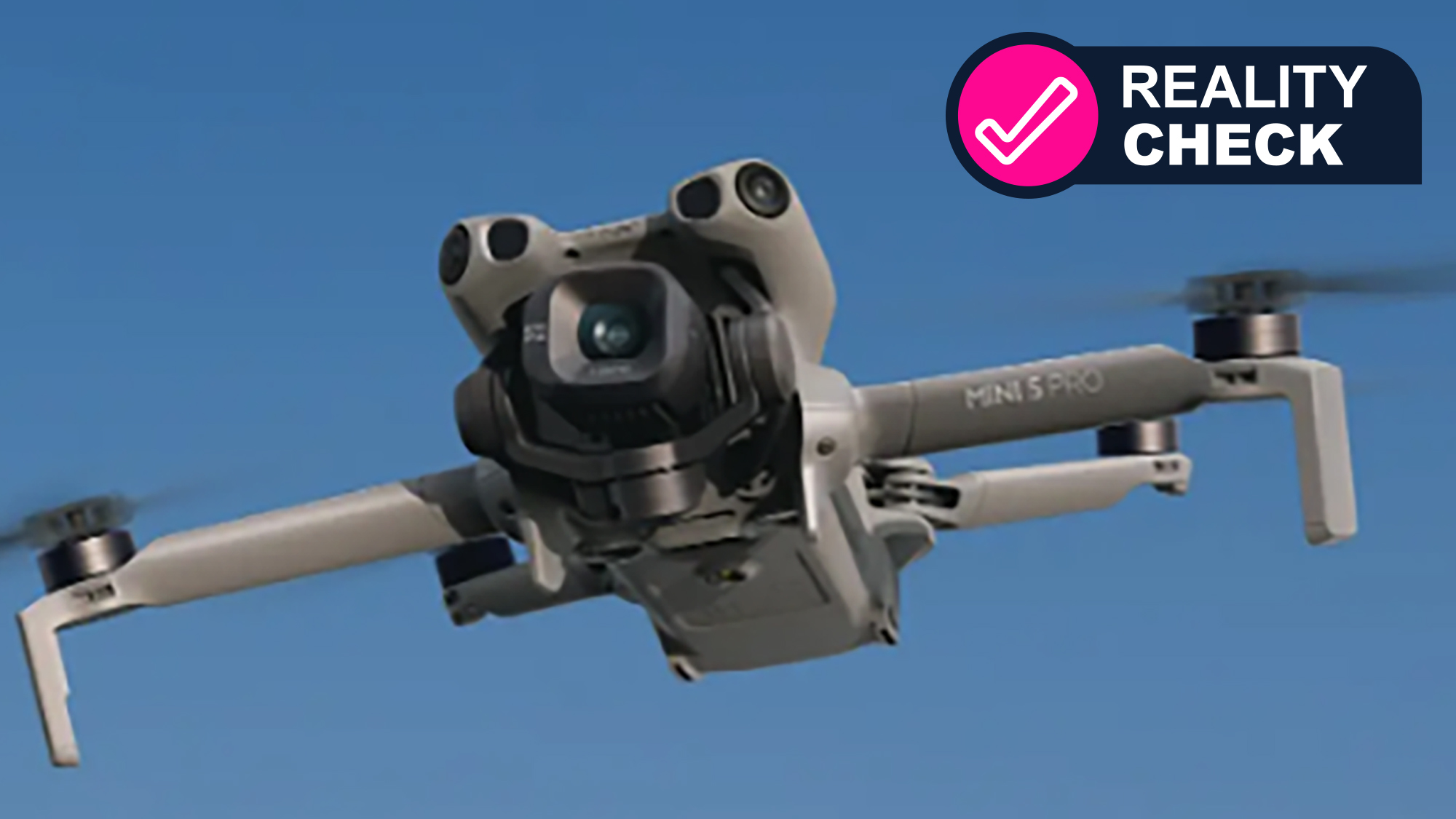Copyright techradar

Skip to main content the technology experts België (Nederlands) Deutschland North America US (English) Australasia New Zealand View Profile Search TechRadar Popular Phone Brands Samsung Galaxy Google Pixel Operating Systems More from Phones Network Carriers Phone Accessories Phone Reviews Phone Buying Guides Phone Deals Chromebooks Windows Laptops Gaming Laptops Desktop PCs Websites & Apps Wi-Fi & Broadband Social Media Cyber Security Peripherals Popular Computing Brands More from Computing Computing Reviews Computing Buying Guides Computing Deals Computing News AI Platforms & Assistants Apple Intelligence TV Insights TV Buying Guides More for your TV Home Theatre Streaming Devices Entertainment Prime Video How to Watch Smartwatches Fitness Trackers Exercise Equipment Fitness Headphones Fitness Apps Smart Rings Watch Brands Apple Watch Google Pixel Watch Samsung Galaxy Watch Oral Health More from Fitness Fitness News Fitness Reviews Fitness Buying Guides Fitness Deals Earbuds & AirPods Wireless Headphones Wireless Speakers Portable Players Audio Streaming Apple Music More from Audio Audio Reviews Audio Buying Guides Audio Deals VPN Services VPN Security Camera Types 360 Cameras Camera Brands More from Cameras Camera Accessories Camera Lenses Camera Reviews Camera Buying Guides Camera Deals Camera News Photography Home Security Smart Speakers Smart Lights Smart Scales Smart Thermostats Amazon Echo Small Appliances Air Quality Coffee Machines Robot Vacuums Home Brands Philips Hue More from Home Home Reviews Home Buying Guides Popular Brands Tech Radar Pro Tech Radar Gaming View Phones Popular Phone Brands Samsung Galaxy Google Pixel Operating Systems More from Phones Network Carriers Phone Accessories Phone Reviews Phone Buying Guides Phone Deals View Computing View Laptops Chromebooks Windows Laptops Gaming Laptops Desktop PCs View Software Components View Components View Internet Websites & Apps Wi-Fi & Broadband Social Media View Security Cyber Security View Tablets Peripherals View Peripherals Popular Computing Brands More from Computing Computing Reviews Computing Buying Guides Computing Deals Computing News AI Platforms & Assistants Apple Intelligence TV Insights TV Buying Guides More for your TV Home Theatre Streaming Devices View Streaming Entertainment Prime Video How to Watch View Fitness Smartwatches Fitness Trackers Exercise Equipment Fitness Headphones Fitness Apps Smart Rings Watch Brands Apple Watch Google Pixel Watch Samsung Galaxy Watch Oral Health More from Fitness Fitness News Fitness Reviews Fitness Buying Guides Fitness Deals Headphones View Headphones Earbuds & AirPods Wireless Headphones View Speakers Wireless Speakers Portable Players Audio Streaming View Audio Streaming Apple Music More from Audio Audio Reviews Audio Buying Guides Audio Deals VPN Services VPN Security View Cameras Camera Types 360 Cameras Camera Brands More from Cameras Camera Accessories Camera Lenses Camera Reviews Camera Buying Guides Camera Deals Camera News Photography Smart Home View Smart Home Home Security Smart Speakers Smart Lights Smart Scales Smart Thermostats Amazon Echo Small Appliances View Small Appliances Air Quality Coffee Machines Robot Vacuums Home Brands Philips Hue More from Home Home Reviews Home Buying Guides View Browse Popular Brands Tech Radar Pro Tech Radar Gaming iPhone Air review iPhone 17 Pro review iPhone 17 Pro Max review iPhone 17 review Best laptop Best web hosting NYT Wordle today Don't miss these 360 Cameras Best 360 camera 2025 Action Cameras Insta360 Go Ultra review: the ultimate tiny hands-free 4K action cam? The sub-250g DJI Mini 5 Pro has landed – and it raises the bar for beginner drones The best beginner drones for 2025 Action Cameras The best action camera you can buy in 2025, based on in-depth testing Camera Accessories The best wireless mic for 2025, following rigorous real-world testing DJI Mini 5 Pro vs DJI Mini 4K: here's which sub-250g drone I'd buy The best camera for photography 2025 The new DJI Mini 5 Pro drone proves you need this one feature for the best flying experience I’ve been testing the DJI Mini 5 Pro – trust me, it’s the drone to get if you shoot for social DJI Mini 5 Pro leaks reveal potential specs and design, but one big question remains I review drones for a living and I’m more excited about the DJI Mini 5 Pro than the Insta360 Antigravity A1 – here’s why New DJI Mini 5 Pro leak suggests it could be perfect travel drone thanks to these two features DJI slashes the price of the Mini 4 Pro by 22% for Prime Day – don't miss this deal on the best beginner drone I've flown More DJI Mini 5 Pro leaks suggest it will set the bar for ultra-lightweight drones, for a tantalizing price Is the DJI Mini 5 Pro really a legal nightmare? Here's what the world's big drone regulators told me Mark Wilson 27 September 2025 It's complicated, but not a deal-breaker When you purchase through links on our site, we may earn an affiliate commission. Here’s how it works. (Image credit: DJI) The controversy The reality The verdict The DJI Mini 5 Pro drone has courted controversy due to its weight Many versions of the drone are just over the 250g weight threshold This can affect how and where you can fly it in some regions The DJI Mini 5 Pro flew into our lives last week – and the mini drone immediately sparked a surprising controversy. Why? It all came down to its weight, which is a crucial (if slightly dry) subject in the world of drone regulations. In most regions, 250g (or 0.55lbs in the US) is a significant weight figure for drones. In fact, it's the whole reason why DJI's Mini series exists. If a drone weighs more than 250g, you may need extra licenses, registrations or IDs to fly it in certain regions. It can also affect where you fly the drone, for example near 'uninvolved' people. To complicate things further, every region has its own regulatory nuances. Of course, many of the best drones weigh more than 250g. But the reason why DJI has got into hot water is because the Mini 5 Pro not only comes dangerously close to that weight limit, it has (in many reported cases) gone slightly over it. This blurring of the lines has left many confused about what kind of drone they're buying. You may like DJI Mini 5 Pro vs DJI Mini 4K: here's which sub-250g drone I'd buy The sub-250g DJI Mini 5 Pro has landed – and it raises the bar for beginner drones I’ve been testing the DJI Mini 5 Pro – trust me, it’s the drone to get if you shoot for social To help clear up this mess, I asked all of the drone regulators in the US, UK, Canada, EU and Australia to comment on the Mini 5 Pro and explain what the weight controversy means for flying it in their regions. If you live in one of those regions (or are planning to travel there with a drone like the Mini 5 Pro), the answers below should hopefully help. But first, a quick recap of how we got here... The controversy: how DJI has responded DJI isn't exactly unfamiliar with drone regulations – its Viewpoints blog often publishes insightful posts about them. So what did it have to say about the DJI Mini 5 Pro's weight? DJI told us: "The DJI Mini 5 Pro has a design weight of 249.9g. Due to manufacturing tolerances, the actual weight of the product may vary slightly within a range of ±4g. Minor weight fluctuations are normal". Get daily insight, inspiration and deals in your inbox Sign up for breaking news, reviews, opinion, top tech deals, and more. Contact me with news and offers from other Future brandsReceive email from us on behalf of our trusted partners or sponsorsBy submitting your information you agree to the Terms & Conditions and Privacy Policy and are aged 16 or over. It added that fliers should comply with their local drone regulations. Which sounds simple enough, but those regulations contain subtle inter-regional nuances and, in the UK's case, are also due to change soon in a way that affects drones in the Mini 5 Pro's class. (Image credit: Tim Coleman) We have been made aware that many operators have found their DJI Mini 5 Pro weighs more than 250g.CAA (UK Civil Aviation Authority) To confuse things further, DJI has self-certified the Mini 5 Pro as meeting the requirements for a 'C0' classification in Europe (which covers sub-250g drones). But that also doesn't legally absolve you of the responsibility for checking your drone actually meets the requirements of the class you're planning to fly in. Still, surely a few grams here or there doesn't make much difference? And what kind of law enforcement runs around with a set of perfectly-calibrated scales? While that's true, the consequences could be more serious if you get involved in an incident, like the game developer Peter Tripp Akemann did recently. You may like DJI Mini 5 Pro vs DJI Mini 4K: here's which sub-250g drone I'd buy The sub-250g DJI Mini 5 Pro has landed – and it raises the bar for beginner drones I’ve been testing the DJI Mini 5 Pro – trust me, it’s the drone to get if you shoot for social If you're flying a drone in a way that isn't technically legal for the weight class you think it qualifies for, then you could be in legal hot water. So I asked the drone regulators in the US, UK, Canada, EU and Australia for clarification on what you need to consider for the DJI Mini 5 Pro – here's what they had to say. The reality: it depends where you live While drone laws are similar between the many regions that use the 250g weight marker for their lowest class of drones, they're not identical. Also, right now only the EU's regulatory agency EASA has indicated that its regulations could include support for the "manufacturing tolerances" mentioned by DJI regarding the Mini 5 Pro's weight. That makes things complicated, so here's what each region's regulatory agency told me about flying a Mini 5 Pro recreationally. Australia's body, CASA (Civil Aviation Safety Authority), said it's looking into it and will report back soon, so I'll update this page when it does. The clock is ticking on a full DJI drone ban in the US, which could happen by December. However, a ban wouldn't necessarily mean being unable to fly DJI drones in the US, and the FAA (Federal Aviation Administration) is pretty clear on its guidelines for drones like the Mini 5 Pro. The FAA told me that that manufacturer specs or classifications like 'C0' don't mean you don't need to check the take-off weight of your drone. "The owner must check the drone’s takeoff weight to ensure it remains at or below 0.55 pounds (249.48 grams) for Category 1 operations" it told me. While the EU's regulatory body EASA is proposing to allow a small 3% weight tolerance on C0-class drones, that isn't the case in the US. "FAA rules do not allow small weight differences" an FAA spokesperson told me. (Image credit: Tim Coleman) So what do you need to fly a drone like the Mini 5 Pro in the US? This FAA tool is a handy place to start. If your drone dips under 0.55 pounds (or 249.98g), you won't need to register the drone with the FAA if you're flying recreationally, but you should pass the Recreational UAS Safety Test (TRUST). If your Mini 5 Pro is above that weight limit, you'll need to register it at the FAADroneZone. If you're traveling to the US on holiday, there is separate guidance for foreign operators. How about flying over people? The news is less rosy there for the Mini 5 Pro. "A drone can only fly over people under Category 1 if it weighs 249.48 grams (0.55 pounds) or less at takeoff and throughout the flight. The drone also cannot have exposed rotating parts. Adding equipment such as propeller guards, a larger battery, or extra lights can make the drone too heavy to qualify for Category 1 operations" the FAA told me. In other words, that requirement to use propellor guards for flying over people and moving vehicles will almost certainly tip the Mini 5 Pro over the limit, given its weight alone is 249.9g. So unless you apply for a waiver, you'll be more restricted in those situations than in other regions... The UK's drone laws are due to change from January 1 2026, which has repercussions (some positive) for models like the DJI Mini 5 Pro. Until then, you're going to need to follow existing rules, including getting both a Flyer ID and Operator ID. Interestingly, the CAA (UK Civil Aviation Authority) told me "we have been made aware that many operators have found their DJI Mini 5 Pro weighs more than 250g". So that confirms it's a common issue – unfortunately, that doesn't mean there's any leeway in the drone laws. The CAA told me there are no weight tolerances in the UK's regulations, like the ones proposed by the EU's EASA (see below). "If the drone has been classed as C0, even if it has a C0 sticker, yet weighs more than 250g, then this takes away the C0 rating" it told me for flights in the UK. So what does that mean for flying until January 2026? You're going to have to be careful and not take that C0 label at face value because "the take-off weight of the drone is the important measurement", the CAA told me. "The addition of any accessories, such as extra landing legs, filters, colored skins, visibility lights or even ID labels, must be factored into the total weight of the drone. Whatever is attached to the drone must be weighed as well. If this changes the category of the drone, then you must fly in the correct weight category" it added. In other words, get your scales out. (Image credit: Tim Coleman) This puts DJI Mini 5 Pro buyers in an awkward position for the next few months, but there's some good news. From January 1 2026, the CAA will be allowing C1 class drones to fly in the same A1 'over people' category as C0 drones currently can. This means there'll be no real disadvantage to upgrading your Mini 5 Pro to the C1 category (following DJI's process) in 2026, with DJI confirming to me that once you've upgraded it'll also support Remote ID (another C1 necessity). The bad news? These new regulations will only apply until end of 2027. What happens after that isn't yet clear, but it could mean C1 class drones could lose that ability to fly in the open A1 category – let's hope there's a change in the regulations before then. The other big change from 2026 is that the UK will have its own classification labels (which closely follow the EU's labels). The CAA says you'll still be able buy and fly drones that don't have those new labels from next year, you'll just need to follow the regulations based on the drone's weight. For many Mini 5 Pro owners, that will likely mean following C1 regulations. Read the full CAA drone code Canada's drone regulations have their own language, with sub-250g models called 'microdrones'. However, the fundamentals are the similar to other regions outside the EU – there is no allowance for manufacturing weight tolerances in the laws, and it's up to the drone owner to know the weight of their drone. This means the Mini 5 Pro potentially tipping the wrong side of that 250g mark is a fairly big deal. If the operating weight of the drone is 250 grams or more, it isn’t a microdrone. Drones at or above this weight must be registered.Transport Canada The country's drone regulation agency, Transport Canada, told me: "Drone pilots are responsible for confirming the weight of their drone. The weight and capabilities of the drone, distance from bystanders, and airspace rules determine the category of drone operation. Each category has its own set of rules that drone pilots must follow." 'Microdrones' (ones under 250g) have comparatively few regulations. You don't need to register or get a drone pilot certificate to fly them. You also only need to follow "good practice", including keeping a "safe lateral distance between your drone and any bystanders". That all changes for drones above that weight. (Image credit: DJI) On the subject of DJI's "manufacturing tolerances" for the Mini 5 Pro, Transport Canada said: "If the operating weight of the drone is 250 grams or more, it isn’t a microdrone. Drones at or above this weight must be registered, and a Pilot Certificate is required to operate them". Crucially, it add that "when there is uncertainty about the drone’s weight being 250 grams or more, it is recommended to register the drone and obtain a Pilot Certificate – Basic Operations or Pilot Certificate – Advanced Operations." The former involves registering your drone and passing the Small Basic Exam in order to get the certificate. If you want to fly over 'bystanders' or within 30m of them, you'll need the Advanced Operations certificate, which has much tougher requirements (including passing an Advanced Exam and passing a flight review with a flight reviewer. That means Mini 5 Pro pilots are potentially more restricted in Canada than other regions, if their take-off weight is over 250g. Read the full Transport Canada drone regulations The EU's drone agency, EASA, has arguably muddied the waters a little in its response to the Mini 5 Pro. As reported by Quadricottero News, EASA's Drone Project Manager Natala Di Rubbo told it: “I have verified: the Mini 5 Pro has a declaration of conformity with Regulation 2019/945 for class C0. A closer reading of the prEN 4709-001 standard reveals that the required tolerance is ±3%.” In other words, a drone could weigh 257g and still qualify for the EU's C0 classification under that regulation. This whole fiasco would be a lot simpler if that was also the case for other regions like the US and Canada, but it isn't. There's also an inevitable complication – as noted by DC Rainmaker, that standard seemingly doesn't take effect until April 30 2026. Sigh. I asked Natala Di Rubbo and the EASA to clarify this, but so far haven't received a response and will update this page if I do. However, as you can see in the diagram below, this ultimately doesn't make much difference to the Mini 5 Pro when flying in the EU. Because C1 category drones can also fly in the A1 subcategory over people (but not crowds), you could simply upgrade your Mini 5 Pro to a C1 classification in that region without much downside. (Image credit: EASA) The main difference between a C0 and C1 drone in Europe (other than the weight allowances) is that you'll need to complete online training and pass an online exam for a C1 classification. You'll also need a drone that supports Remote ID, but DJI told me that once you've applied for a C1 classification (following DJI's process) then Remote ID will be activated on the drone, regardless of which battery you're using (the Intelligent Flight Battery or the Plus version). Read the full EASA drone regulations The verdict: it's complicated, but no deal-breaker (Image credit: Tim Coleman) The DJI Mini 5 Pro is, unfortunately, a slight legal mess. The crux of the issue is that the "manufacturing tolerances" that DJI outlines in the drone's specs aren't reflected in the laws of most regions, which have a hard 250g limit for their lowest drone category. In some regions, this isn't a major issue. For example, in the EU (and the UK from January 1 2026), the higher C1 category still allows pilots to fly near uninvolved people in the same way as the C0 classification. This means many Mini 5 Pro owners in those regions will likely apply for C1 classification. It's something Mini drone owners have also needed to do when flying with DJI's heavier Intelligent Flight Battery Plus, which isn't available in the UK or EU. And beyond the additional hassle, the only real downside in the EU is needing to pass an online exam, which is no bad thing. But while it seems the EASA (the EU's drone agency) is planning to build some manufacturing weight tolerances into its regulations, that isn't the case right now in other regions, as confirmed to us by the FAA (US), CAA (UK) and Transport Canada. In some cases like the latter, the Mini 5 Pro's weight issue has bigger implications, such as being unable to fly it within 30m of bystanders if its take-off weight does tip over 250g. None of this is really a deal-breaker for DJI's new drone, with our hands-on DJI Mini 5 Pro review concluding that it's "definitely worth upgrading for". However, the added complications of that weight are something to bear in mind, particularly if you're planning to travel and fly the drone outside your home country. Hopefully, the information and links above will prove helpful if that's in your plans. You might also like Will DJI drones be banned in the US? DJI says the clock is ticking – and it urgently needs its fans to help Another DJI rival bites the dust – Autel quits consumer drones, here’s what you need to know The DJI Mini 5 Pro is the most impressive sub-250g drone I've tested – trust me, it's definitely worth upgrading for See more News about Cameras Mark Wilson Social Links Navigation Senior news editor Mark is TechRadar's Senior news editor. Having worked in tech journalism for a ludicrous 17 years, Mark is now attempting to break the world record for the number of camera bags hoarded by one person. He was previously Cameras Editor at both TechRadar and Trusted Reviews, Acting editor on Stuff.tv, as well as Features editor and Reviews editor on Stuff magazine. As a freelancer, he's contributed to titles including The Sunday Times, FourFourTwo and Arena. And in a former life, he also won The Daily Telegraph's Young Sportswriter of the Year. But that was before he discovered the strange joys of getting up at 4am for a photo shoot in London's Square Mile. You must confirm your public display name before commenting Please logout and then login again, you will then be prompted to enter your display name. DJI Mini 5 Pro vs DJI Mini 4K: here's which sub-250g drone I'd buy The sub-250g DJI Mini 5 Pro has landed – and it raises the bar for beginner drones I’ve been testing the DJI Mini 5 Pro – trust me, it’s the drone to get if you shoot for social DJI Mini 5 Pro leaks reveal potential specs and design, but one big question remains I review drones for a living and I’m more excited about the DJI Mini 5 Pro than the Insta360 Antigravity A1 – here’s why New DJI Mini 5 Pro leak suggests it could be perfect travel drone thanks to these two features Latest in Drones I’ve been testing the DJI Mini 5 Pro – trust me, it’s the drone to get if you shoot for social The new DJI Mini 5 Pro drone proves you need this one feature for the best flying experience DJI Mini 5 Pro vs DJI Mini 4K: here's which sub-250g drone I'd buy DJI Mini 5 Pro review: raising the bar for beginner drones The sub-250g DJI Mini 5 Pro has landed – and it raises the bar for beginner drones The DJI Mini 5 Pro has leaked again, with images and unboxing videos appearing online Latest in News New Samsung Galaxy Z Tri-fold leaks hint at key software and camera zoom features You can now use Google's viral Nano Banana AI directly in Photoshop ICYMI: the week's 7 biggest tech stories from Apple's response to 'Scratchgate' and the ROG Xbox Ally's price reveal Is the DJI Mini 5 Pro really a legal nightmare? Here's what the world's big drone regulators told me Quordle hints and answers for Sunday, September 28 (game #1343) NYT Strands hints and answers for Sunday, September 28 (game #574) LATEST ARTICLES 'Alien: Earth' season 2: everything we know so far about the sci-fi horror show's return Microsoft Copilot has access to three million sensitive data records per organization, wide-ranging AI survey finds - here's why it matters New Samsung Galaxy Z Tri-fold leaks hint at key software and camera zoom features Windows 10 EOL vs Windows 7 EOL: Here's how two of Microsoft's most popular OSes compared two months before their days of reckoning Klipsch Flexus Core 300 review: a seriously immersive soundbar system with Dirac Live room correction TechRadar is part of Future US Inc, an international media group and leading digital publisher. Visit our corporate site. Contact Future's experts Terms and conditions Privacy policy Cookies policy Advertise with us Web notifications Accessibility Statement Future US, Inc. Full 7th Floor, 130 West 42nd Street, Please login or signup to comment Please wait...



